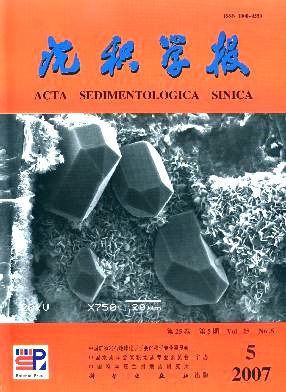Nodular Chert of the Permian Chihsia Formation from South China and Its Geological Implications
- Received Date: 1900-01-01
- Rev Recd Date: 1900-01-01
- Publish Date: 2007-10-10
-
Key words:
- Chihsia Formation /
- nodular chert /
- chalcedony /
- diagenesis
Abstract: The Middle Permian Chihsia Formation of South China is featured by nodular chert, which is of implications in the reconstruction of coeval paleogeography and paleoceanography. This paper deals with mineralogical, petrologic characteristics and diagenesis of the nodular chert collected from Huangshi Hubei, Nanjing Jiangsu, and Laibin Guangxi. The nodular chert consists of mainly of microquartz, lengthfast chalcedony and megaquartz with minor lengthslow chalcedony, euhedral dolomite rhomb and sparry calcite as well as minor skeletal fragments. The microquartz, lengthfast chalcedony, lengthslow chalcedony and euhedral dolomite rhomb precipitated in the early diagenesis, the sparry calcite during burial diagenesis, and megaquartz across early and later stage. The source of silica derived from the thriving of the siliceousshell organisms, combining with evidences from the formation of nodular celestite and sepiolite in the host rock. The reliable constraints on diagenetic conditions and precipitating time relative to the diagenetic spectrum of the Chihsia carbonates for the formation of the lengthfast chalcedony and dolomite would be of farreaching implication in our understanding about their origin, and even about the origin of the bedded siliceous rocks of Permian in the investigation area.
| Citation: | LIU Xinyu. Nodular Chert of the Permian Chihsia Formation from South China and Its Geological Implications[J]. Acta Sedimentologica Sinica, 2007, 25(5): 730-736. |






 DownLoad:
DownLoad: